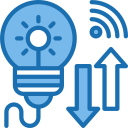Plan for Interruptions, Then Bounce Back Fast
When interrupted, pause and label: urgent, important, or later. If it takes under two minutes, do it. If not, park it. Capture in one list, not five. Recovery thrives on one trusted place to re-enter your work.
Plan for Interruptions, Then Bounce Back Fast
Stand, sip water, breathe five deep cycles, then restate your next step out loud. Set a short timer and start. This ritual rebuilds momentum without perfectionism, especially useful after kid-related surprises or noisy deliveries.









